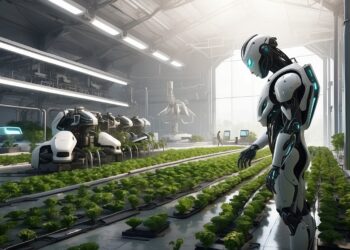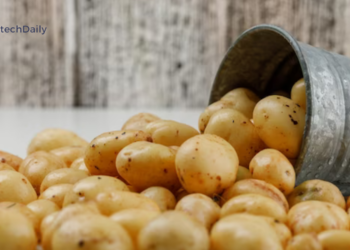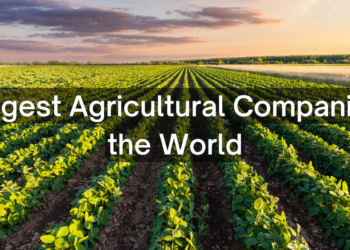Agriculture is a vital sector for global food security, but it also has a significant impact on the environment. Climate change, soil degradation, and water scarcity are just a few of the challenges facing the agricultural industry today. However, there is growing recognition of the importance of sustainable agriculture in addressing these challenges and promoting a circular economy.
The Circular Economy:
The Circular Economy is a model of economic growth that is based on the principles of reducing waste, maximizing resource efficiency, and promoting sustainability. The aim of the circular economy is to create a closed-loop system in which resources are kept in use for as long as possible, rather than being discarded as soon as they are no longer needed. This helps to reduce the demand for virgin materials, minimize waste, and reduce the impact on the environment.

In a circular economy, waste is transformed into a new resource through processes such as recycling, composting, and remanufacturing. This helps to keep resources in circulation, rather than being discarded and lost forever. The circular economy also promotes the use of sustainable materials, such as bioplastics, which can be broken down and transformed into new materials at the end of their life.
The circular economy is not just about reducing waste and improving resource efficiency, it also has the potential to create new economic opportunities and drive innovation. By using waste as a resource, businesses can create new products and services, generate new revenue streams, and improve their competitiveness.
The circular economy is also a key part of the transition to a more sustainable and low-carbon economy. By reducing the demand for virgin materials and minimizing waste, the circular economy helps to reduce greenhouse gas emissions and conserve energy.
The Circular Economy is a model of economic growth that is based on the principles of reducing waste, maximizing resource efficiency, and promoting sustainability. The aim of the circular economy is to create a closed-loop system in which resources are kept in use for as long as possible, rather than being discarded as soon as they are no longer needed. This helps to reduce the demand for virgin materials, minimize waste, and reduce the impact on the environment.
In a circular economy, waste is transformed into a new resource through processes such as recycling, composting, and remanufacturing. This helps to keep resources in circulation, rather than being discarded and lost forever. The circular economy also promotes the use of sustainable materials, such as bioplastics, which can be broken down and transformed into new materials at the end of their life.
The circular economy is not just about reducing waste and improving resource efficiency, it also has the potential to create new economic opportunities and drive innovation. By using waste as a resource, businesses can create new products and services, generate new revenue streams, and improve their competitiveness.
The circular economy is also a key part of the transition to a more sustainable and low-carbon economy. By reducing the demand for virgin materials and minimizing waste, the circular economy helps to reduce greenhouse gas emissions and conserve energy.
The Benefits of Sustainable Agriculture:
Sustainable agriculture is an approach to agriculture that aims to meet the needs of the present without compromising the ability of future generations to meet their own needs. It is based on the principles of environmental stewardship, economic viability, and social responsibility.
Sustainable agriculture can help to:
- Improve Soil Health: Sustainable agriculture practices can help to improve soil health by reducing soil degradation, improving soil structure, and increasing soil fertility.
- Protect Water Resources: Sustainable agriculture can help to reduce the impact of agriculture on water resources by reducing water pollution and improving water management practices.
- Promote Biodiversity: Sustainable agriculture can help to promote biodiversity by providing habitat for wildlife, protecting natural resources, and preserving traditional agricultural practices.
- Reduce Greenhouse Gas Emissions: Sustainable agriculture can help to reduce greenhouse gas emissions by reducing the use of fossil fuels, improving soil carbon sequestration, and promoting sustainable livestock management practices.
The Importance of a Circular Economy in Sustainable Agriculture:

The circular economy can play a key role in promoting sustainable agriculture by reducing waste and maximizing resource efficiency. By incorporating circular principles into agricultural practices, we can create a closed-loop system in which waste is transformed into a new resource. This can help to reduce the impact of agriculture on the environment and promote long-term sustainability.
Examples of Circular Agriculture Practices:
- Conservation Tillage: Conservation tillage is a type of agricultural practice that reduces soil erosion and promotes soil health by leaving crop residue on the soil surface. This reduces the need for tillage, which can improve soil structure and fertility, while also reducing greenhouse gas emissions.
- Cover Cropping: Cover cropping is a type of agricultural practice that involves planting crops between main crop rotations. These crops help to improve soil health by increasing organic matter and reducing soil erosion. They can also reduce the need for fertilizers and pesticides while promoting biodiversity.
- Integrated Pest Management: Integrated pest management is a type of agricultural practice that involves the use of natural predators, biotechnology, and cultural practices to control pests. This can reduce the need for pesticides and improve crop yields, while also reducing the impact on the environment.
Conclusion:
Sustainable agriculture is an important step towards creating a more environmentally-friendly and economically-viable agricultural sector. By incorporating circular economy principles into agricultural practices, we can create a closed-loop system in which waste is transformed into a new resource.
This can help to reduce the impact of agriculture on the environment, promote long-term sustainability, and ensure the viability of the agricultural sector for future generations.










